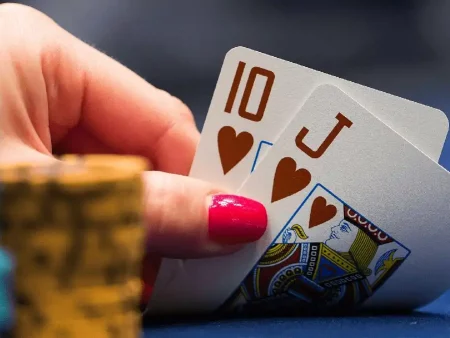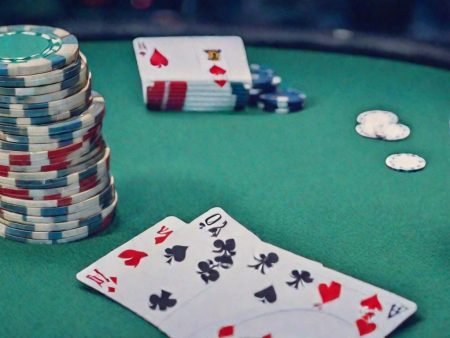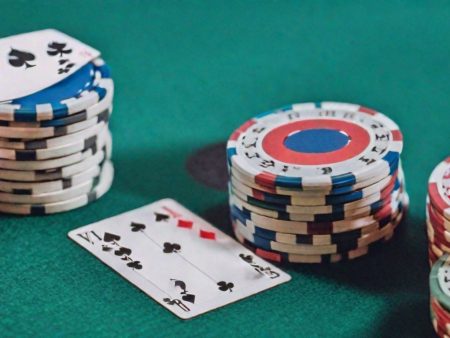The popular term “backdoor” refers to a situation where a player has a hand that is partially formed, with the possibility of completing it only after receiving the necessary cards on the turn and river. Some inexperienced players may consider such a hand less promising, while others may overestimate it, continuing to chase it without realistic chances of winning or a clear plan at that stage of the hand. The truth, as often is the case, lies somewhere in the middle: while the potential of backdoor hands should be considered, to effectively use this strategic element in online casinos, it’s essential to fully understand its nature.
Thus, the term “backdoor” in poker comes from the English word “backdoor,” which literally means “secret entrance.” In this context, it metaphorically suggests that a player’s hand on the flop looks like a losing hand, but there’s a chance to “sneak through the backdoor” and win the pot. To do this, a card that completes a four-card hand must appear on the turn, and the hand must be completed on the river. Here are a few illustrative examples.
Backdoor to the Straight
Denis has cards of different suits. On the flop, Denis doesn’t yet have a completed hand, not even a pair. The best hand he could make is a straight. This is possible if a seven comes on the turn and a ten on the river. To calculate the probability of completing this hand, the odds of each required card on each stage are multiplied. On the turn, there are 8 outs: 4 tens and 4 sevens. This means the probability is 8/47 = 17%. On the river, there are 4 outs remaining: 4/46 = 8.7%. The overall probability of successfully completing the hand is 0.17 * 0.087 = 0.0136, or 1.36%. In poker jargon, this backdoor draw is also called “runner-runner.”
Read also: Bluffing in poker from A to Z: a beginner’s guide.
The Flush That Stayed in the Shadows
Poker virtuoso Denis, who gets all the best bonuses from casinos and comes up with different strategies, holds two spades. On the flop, hearts, clubs, and diamonds appear, leaving the spades hidden. A backdoor flush is a potential win if a spade appears on the turn and another spade on the river. The examples above show that the backdoor flush has more promising chances, as the number of “outs” increases at each stage: (9/47) * (8/46) = 3.3%. This is why experienced players consider it in their calculations. The actual value of these hands in this context is higher than 1.36% or 3.3%, as there’s also the possibility of making trips or two pairs.
In poker, there is a term called “dead money” that refers to chips or money that are already in the pot but cannot be returned to the player who put them in. This concept plays a significant role in strategy because it affects the size of the pot and the decisions of players.
Why Has Poker Become So Popular?
Poker, especially online poker, is attracting more and more players. This is due not only to the thrilling gameplay but also to the bonuses offered by many online casinos. New players often receive free chips, bonuses on their first deposit, and other incentives. These bonuses allow players to start with more chances of success and provide an exciting experience. Key concepts in poker include antes, blinds, and dead money. These elements set the betting structure and determine the flow of the game.
What Is the Ante and How Does It Create Dead Money?
Dead money appears due to elements like antes, blinds, or bets made earlier in the hand. The ante is a compulsory bet that all players must place before the hand begins. This bet is part of the rules in many poker games, especially in tournaments. The ante is added to the central pot and increases its size, thus creating dead money.
What’s important to understand is that the presence of dead money in the pot encourages players to act more actively, because even if you don’t want to play the hand, you still have to contribute a bet. The size of the ante is usually fixed and depends on the type of game or tournament. In some tournaments, the ante increases gradually, pushing players to make more active bets.
The Role of Blinds in Creating Dead Money
Blinds are mandatory bets made by only a few players who sit in specific positions. Blinds are essential in creating the initial pot and driving the action in the game. In poker, there are two types of blinds:
- Small blind — the bet made by the player sitting directly to the left of the dealer. It is typically half of the minimum bet for that hand.
- Big blind — the bet made by the player sitting to the left of the small blind. This bet is equal to the minimum bet for the current hand.
Blinds are mandatory, and their size is determined by the game rules. They help create the starting pot and ensure some level of action in the game. During the preflop stage (before community cards are dealt), the blinds create the initial pot, which other players need to match or raise in order to stay in the hand.
Moreover, the blinds rotate to the next player after each hand, ensuring that everyone has an equal opportunity to contribute. The blind amounts may increase during different stages of a tournament, accelerating the game and intensifying competition for the pot.
Read also: Betting in poker: how to place bets correctly.
Why Is It Important to Consider Dead Money?
Understanding the concept of dead money in poker is crucial for effective play because it affects several important aspects:
- Increasing the size of the pot: Dead money makes the pot more appealing. When money is already in the pot, players are more likely to perceive playing the hand as more profitable, since the larger the pot, the higher the potential reward.
- Betting dynamics: A bigger pot might encourage players to place more aggressive bets, as the potential win becomes significantly higher. Players who understand this aspect can adjust their strategy depending on how much dead money is in the pot.
- Opponent analysis: Knowing who has folded helps you gauge what cards your opponents might have, which in turn helps make more informed decisions.
- Psychological impact: When dead money is in the pot, other players might start playing more recklessly or, conversely, more cautiously. Understanding this gives you an edge, as you can anticipate how they may react to your bets.
- How to Use Dead Money to Maximize Profit: Knowing when it’s advantageous to participate in a hand because there is dead money in the pot helps maximize your chances of success. Understanding this concept gives players confidence and the ability to win more during favorable stages of the game.
How to Use Knowledge of Dead Money?
Players who understand how to work with dead money can leverage this knowledge to create strategies aimed at maximizing their profits. This helps:
- Avoid unnecessary risk, participating only in hands where dead money increases your chances of success.
- Predict your opponents’ behavior, using their actions to your advantage.
- Make more informed bets, based on the situation and pot size.
Dead money is an essential tool in poker. Those who know how to work with this concept can not only win more in each hand but also improve their overall strategy in the game. Want to master new casino strategies? Check out the best casino blog – featuring verified tactics and useful tips!
FAQ: Dead money in poker: what it is and how to profit from it
What is dead money in poker?
Dead money in poker refers to chips in the pot that come from players who have folded or contributed without a realistic chance of winning.
This can include blinds, antes, or bets from inexperienced or overly aggressive players who are no longer in the hand.
Why is dead money important in poker?
Dead money increases the size of the pot, creating more opportunities for skilled players to profit.
Recognizing and targeting situations with significant dead money can enhance a player's strategy and overall profitability.
How can players identify dead money in a pot?
Dead money often comes from:
- Forced contributions like blinds or antes.
- Loose or inexperienced players who overcommit and then fold.
- Players chasing unlikely draws or betting without a solid hand.
Observing table dynamics can help identify these opportunities.
What strategies can players use to capitalize on dead money?
- Aggressive play: Raising or betting to isolate weak players or force folds.
- Positioning: Using positional advantage to apply pressure on players contributing dead money.
- Selective aggression: Attacking pots where opponents show weakness or hesitation.
Does dead money exist in tournaments and cash games?
Yes, dead money exists in both formats but appears more frequently in tournaments due to antes and less experienced players.
In cash games, dead money can come from blinds and occasional overbets by recreational players.
How do professionals adjust their strategy for dead money?
Professional players recognize that dead money increases pot odds, encouraging them to play more aggressively.
They focus on exploiting weak opponents and avoid overcommitting to hands where they lack significant equity.
Can dead money affect a player’s table image?
Yes, consistently targeting dead money can make a player appear aggressive or opportunistic.
While this can deter weaker players, it may also provoke stronger opponents to adjust and challenge frequently.






